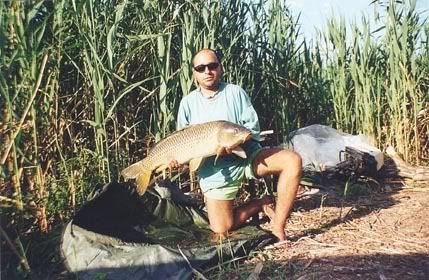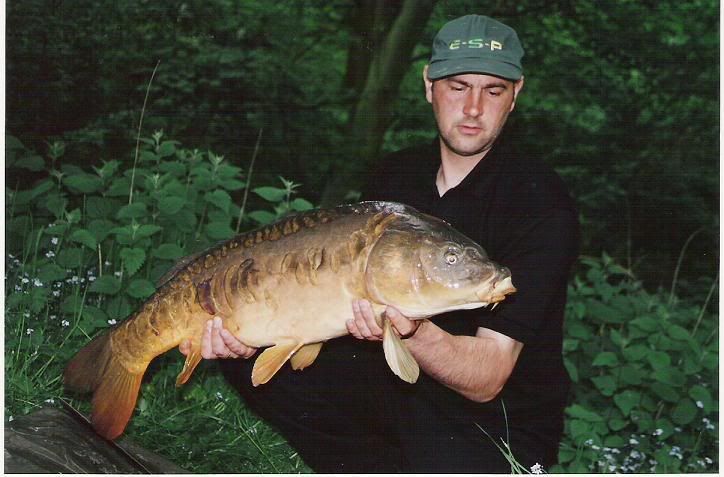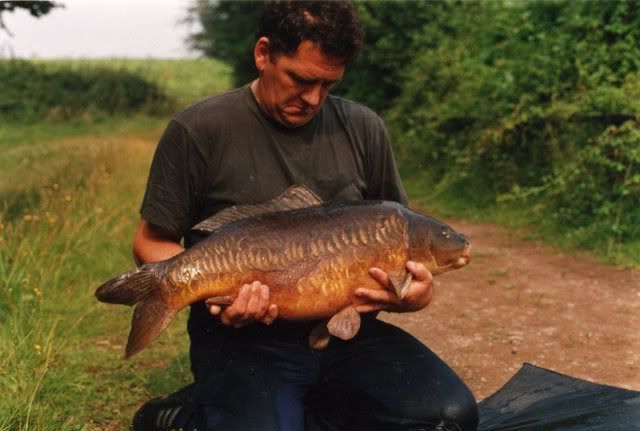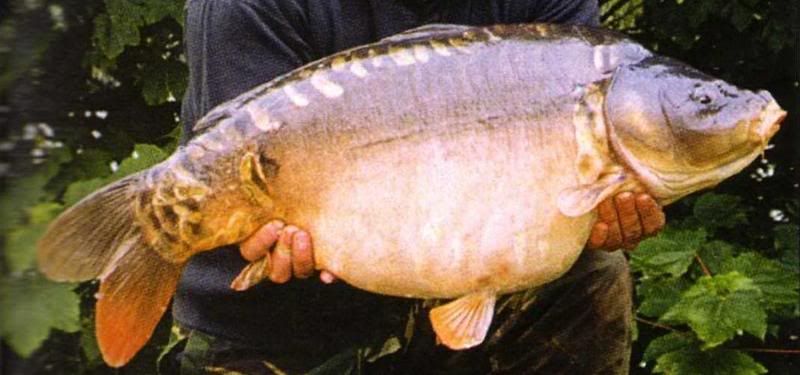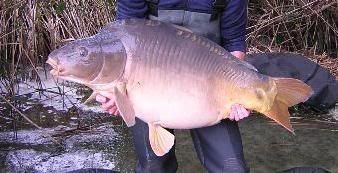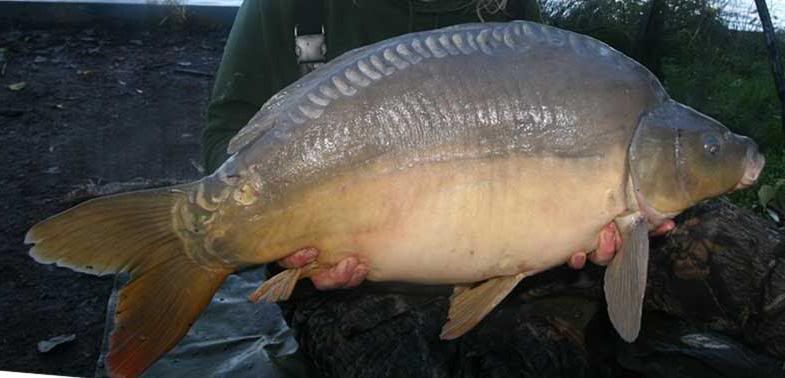Heres a piece I wrote up for another forum with a bit of background information to the heritage of "English" carp.
What is an English carp?
In carp fishing we often hear the term “English” carp or “English” strain of carp mentioned but what exactly distinguishes a carp as English other than it being born here?
Carp are not indigenous to Britain so they had to come from somewhere at some time in the past. Most sources of reference pin the arrival time down to around the 13th century and attribute the arrival to the import of carp by the Benedictine Monks as a source of food for their monasteries. The progeny of these stew pond carp are often referred to as wild carp nowadays. Being the simple, full scaled (common) form of Cyprinus carpio it’s thought that these are the sort of carp that the monks farmed as food.
This is probably a false assumption as globally there’s evidence to strongly suggest that carp have been farmed as food for over 4,000 years. It’s very likely that some level of selective breeding took place along the way in order to produce a faster growing and lesser scaled version of the carp. The forms we now know as Mirror, Linear and Leather carp.
It’s more likely that the fish the monks farmed were actually a mixture of the different forms of carp, these fish merely reverting to the original form of a full scaled common carp over time once selective breeding stopped and nature was left to her own devices.
The carp stocked into Redmire pool in 1934 were said to contain no common carp at all yet the small carp being born in Redmire are now predominantly commons.
It’s hardly likely that carp imported into Britain from the middle ages onwards came from Asia when there were large scale carp farming operations with Europe so we really need to look at the different types of carp being farmed in Europe over that period of time. More specifically since the mid 1800s when what are generally called “King” carp started arriving in Britain. Not now for the monks but for wealthy land owners, members of the aristocracy and finally, towards the end of the 19th Century, for angling clubs and societies.
I’ll term the different carp “races” rather than strains as they are all Cyprinus carpio just as all human beings are Homo sapiens.
The pictures I’ve used are the best examples I can find but in some cases they aren’t the best picture to demonstrate that particular race of carp.
Ropsha Carp
The carp closest to a natural, wild carp would be the Ropsha race of carp from Hungary. There is no evidence of mirror or other lesser scaled forms with Ropsha carp. These fish are probably descended from carp originally native in the river Amur in Russia and are still widespread in rivers like the Danube.
Long, torpedo shaped and with a downturned mouth something like a barbel these are abundant now in most French rivers and quite a few of the French lakes.
A Ropsha Carp from the Danube
Galician Carp
Probably the most well know race of carp here in the UK are the Galicians (fondly called Leneys after Donald Leney who supplied this type of carp from the 1930s to the 1950s). So called as the fish come from Galicia, an area north of the Carpathian Mountains in Eastern Europe.
A classically, well proportioned carp with a thicker set body and pointed ends to the tail lobes these were fairly well distributed throughout Europe and the UK. Handsome scaly and linear scaled forms are plentiful with Galician carp. Good potential for growth.
Galician (Leney)
Another rather special Galician
Dinkelsbuehl Carp
Commonly known as “Dinks” this type of carp originates in Germany but is found in many waters within the UK. The Dorchester Lagoon in Oxfordshire being one of the well known ones.
A more rounded ,deeper body than the Galician with large, round scales along its back and a down turned mouth like the Ropsha. Mostly Dinks are mirrors but they can produce common, linears and even leathers occasionally. A typical Dink is fairly sparsely scaled but some have a good covering of apple slice type scales (Sutton fish). Good potential for growth.
A Dink from Lincolnshire
Italian Carp
A high backed deep bodied carp whose head appears to be sloping downwards when the fish is on the horizontal,a smooth line from the back to the head rather than having well defined shoulders. Italians are sometimes described as “gutty” which is one of the aspects of this race of carp that allows a good potential for growth. Examples of genuine Italian mirrors are to be found in Savay Lake but they are fairly well distributed within the UK. One UK carp farm still produces a "pure" italian.
Italian
Aischgrund Carp
Named after the River Aisch in Bavaria the Aischgrund carp is now found in many of the large lakes in Central France. With its high back and flat belly and blunt face it’s not the prettiest of carp but can grow to good weight as is demonstrated by the fish in France. Still farmed for food in the Aischgrund region. Mostly mirrors or leathers.
Aischgrund Carp
Royale Carp
Called Royale probably due to the story that this carp was selectively bred on the instructions of King Louis XIV these carp are plentiful in both central and southern France. Being high backed with big shoulders and having a long body the Royale is definitely built for growing big and this has been demonstrated well in lakes like Lac d’Orient.
Royale
Frame Carp
Another race of carp from Hungary the Frame carp is so called because of the distribution of evenly sized scales that form a border along the upper and sometimes lower edges of its flanks. Not being a particularly good growing fish the spread of Frame carp into sports fisheries is not as high as some of the other races. Can be found in Fishabil.
Frame Carp
These seven different races of carp may all have played some part in the development of a resulting “English” carp but it does seem to me that we can discount races like the Frame due to it’s limited distribution, even in Europe.
So, what is an English Carp?
It would seem to me according to shape, scaling and other common factors particular to a race that most of the longer existing stocks of carp in the UK come mostly from three of the races. The Galicians, the Dinkelbuehls and the Italians.
There are different levels of the different races and crosses of them around the UK so different areas can have their own “strain” of carp that look similar. Oxfordshire for example has a lot of long, beautifully scaled carp which seem to have Galician roots. Darenth, on the other hand, in the early 90s, had a lot of Italian looking fish.
Some of these regional differences will affect how anglers view a typical English carp I would have thought. I’m pretty sure a lot of us lean in the direction of the fish that Mr Donald Leney brought over to us.

